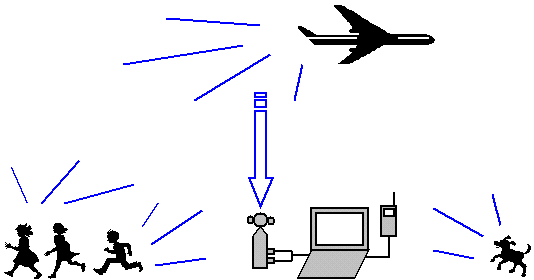
| [OHP 1: Title] |
|
January 2001 Masatsugu Sakurai Yoshimasa Electronic Inc., Daiichi-Nishiwaki Bldg., 1-58-10 Yoyogi, Shibuya, Tokyo, 151-0053 Japan |
| [OHP 2: Conceptual diagram of measurement system] |
 |
Our research in this area began with the measurement of aircraft noise. To measure environmental noise from aircraft or other sources over a wide area for a long period of time, we felt the need for a mechanism that would enable measurements to be made in a basically automatic manner by computer.
| [OHP 3: Model of auditory-brain system] |
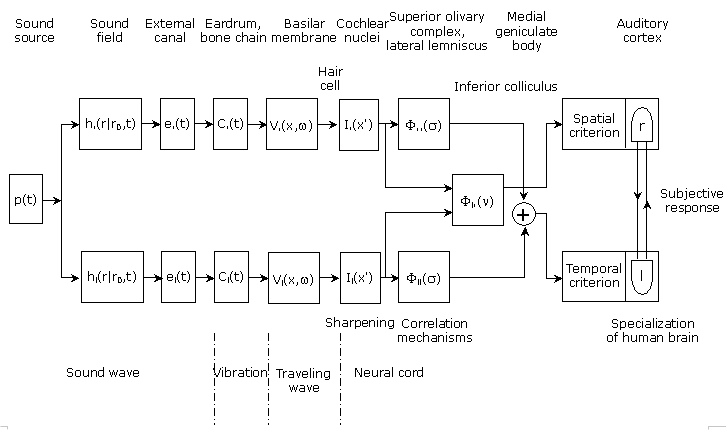
|
Based on the model of auditory-brain system which consists of the
autocorrelation mechanism, the interaural crosscorrelation mechanism between the
both auditory pathways, and the specialization of human brain.
We attempted to identify the noise sources of different car engines using the
model of the auditory-brain system, as well as the autocorrelation function, or
ACF, determined by that model and orthogonal factors extracted from the ACF.
| [OHP 4: F(0), te] |
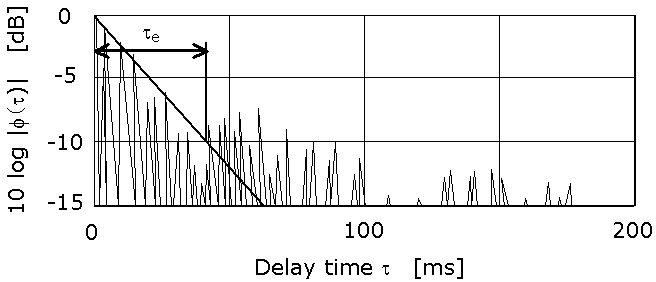 |
OHP shows F(0). The averaged sound energy for two ears, the effective duration, and te, defined by the delay at which the envelope of normalized ACF becomes 0.1.
| [OHP 5: f1, t1] |
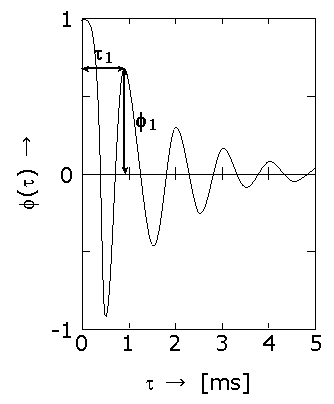 |
Next OHP shows fine structures of autocorrelation function of sound signals including the magnitude of first maximum, f1, and its delay time, t1.
| [OHP 6: t1'] |
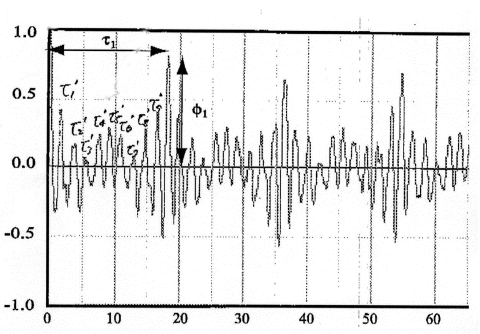 |
In my talk today, I will present new ACF factors, and application for car engine.
| [OHP 7: Outline of the measurement system] |
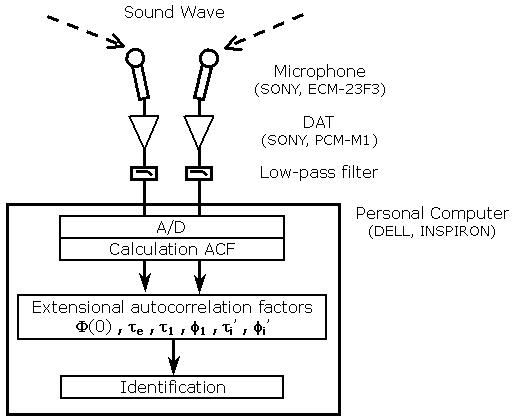 |
I would like to give a description of outline of the measurement system. The measurement system consists of two microphones arranged as a binaural pair, a laptop computer, and software that extracts the ACF and IACF factors from real-time noise data.
| [OHP 8: Car B ACF] |
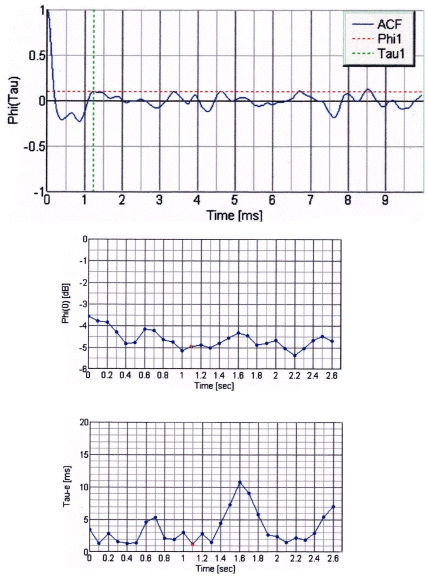 |
SOURCE IDENTIFICATION USING THE ACF FACTORS
F(0) sound energy varies according to the distance
between the source and receiver, if the distance is unknown F(0)
is not useful.
The noise source can be identified by using the other three factors. One of the
guidelines to figure out the minimum te,
which represents the most active part of the noise signal.
| [OHP 9: Car D ACF] |
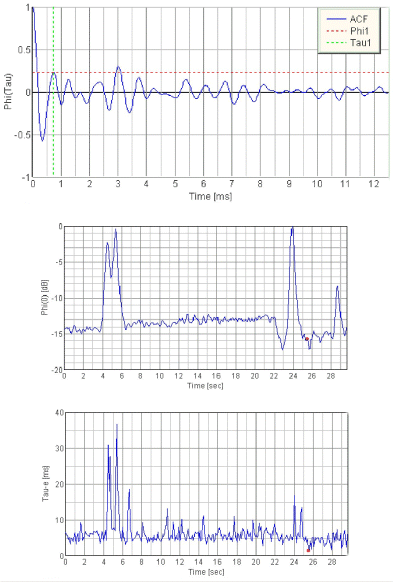 |
The values of each factor at minimum te are calculated. A set of typical ACF factors are used for comparison with an unknown noise.
| [OHP 10: Motor ACF obtained from model-motor experiment] |
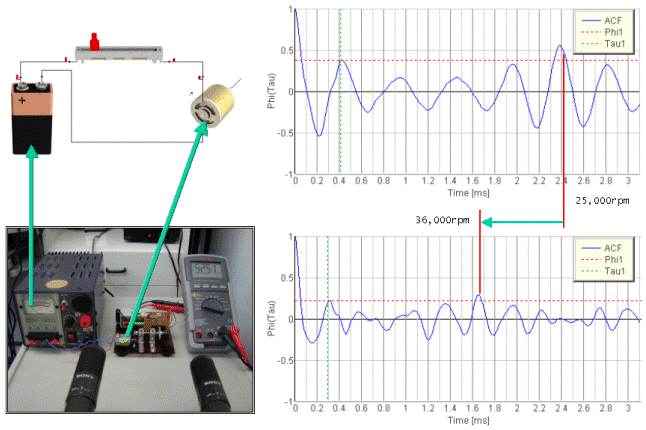 |
The movement of an engine, changes according to driving conditions. And this
prompted us to investigate the relation between engine RPM and ACF.
In the measurement experiments, we decided to use model motors at first.
Because it is simple and small and economy.
The results of this experiment revealed a deep relationship between motor RPM
and the value of t corresponding to maximum f,
that is, where pitch intensity is strong.
| [OHP 11: Graph showing relationship between change in engine RPM and engine ACF] |
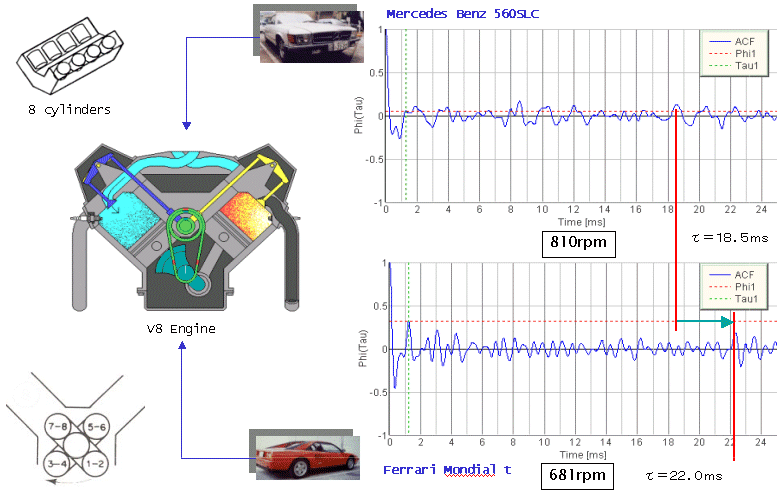 |
On the basis of these results, we then analyzed the data of actual cars.
We found the value of t_ corresponding to maximum f
has a relationship with the frequency of engine explosions.
"i" as a subscript of t was used as
engine's explosion cycle.
| [OHP 12: Explanation of t1'] |
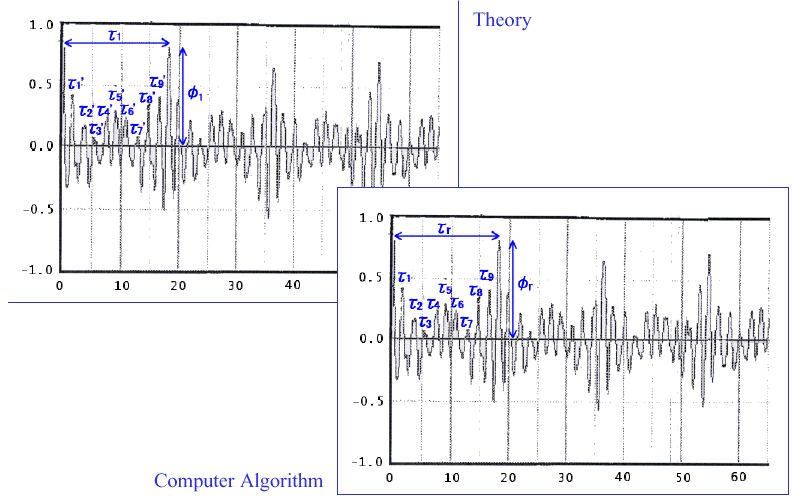 |
Here, I would like to introduce new factors for making an identification:
factors ti' in the order of t1',
t2', t3',
t4', and so on, and factors fi'
in the order of f1', f2',
f3', f4',
and so on. The computer compares ti or fi
with identification templates just in numerical order, such as in the order of t1,
t2, t3,
and so on.
| [OHP 13: Values of orthogonal factors extracted from the ACF by car type] |
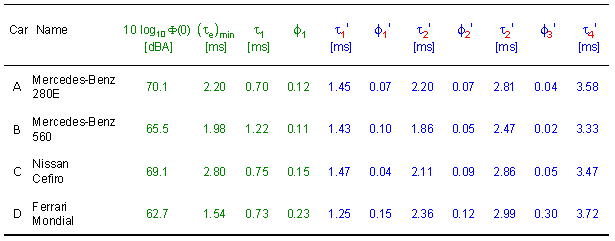 |
I would now like to summarize my presentation and make some conclusions.
In my talk today, I have introduced new orthogonal factors extracted from the
autocorrelation function and have described our noise identification system
application for car engine.
The following conclusions can be made.I t should be possible to identify the other noise sources.
This brings my presentation to a close. Thank you for your attention.